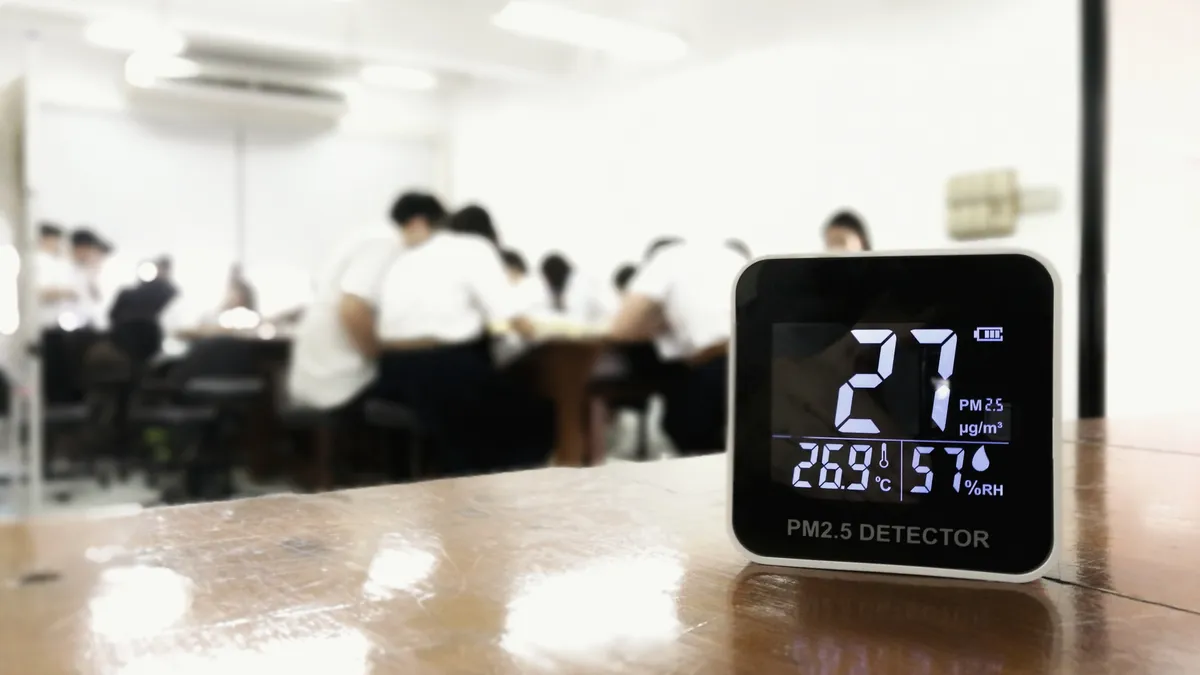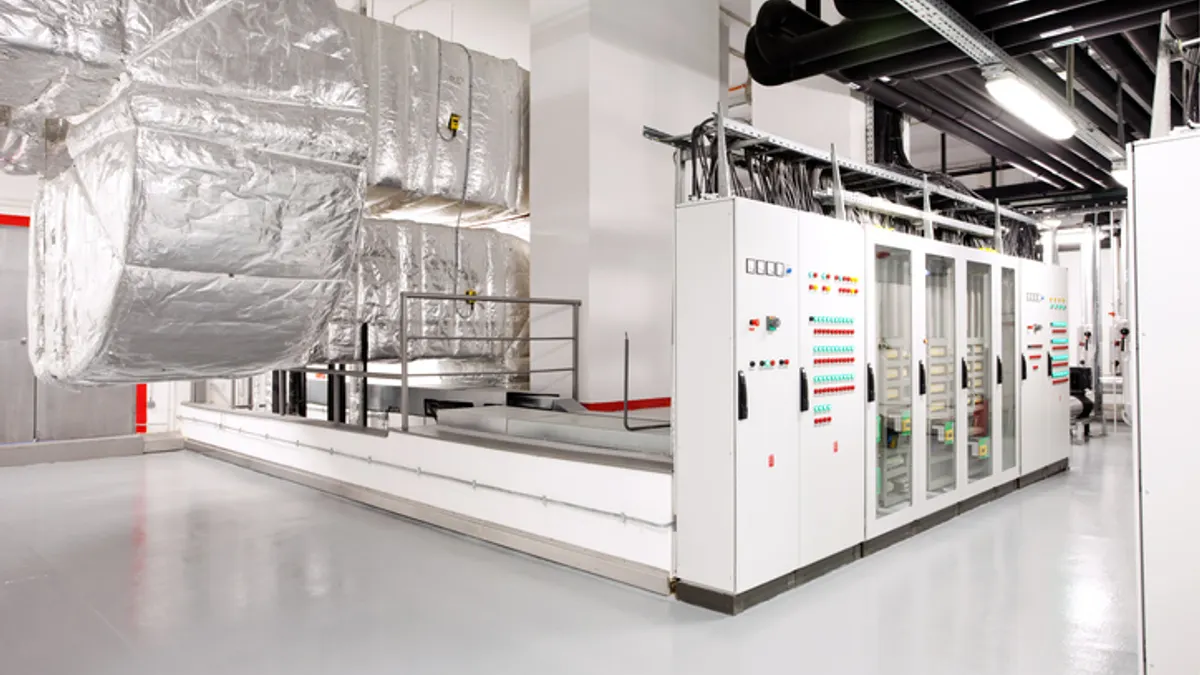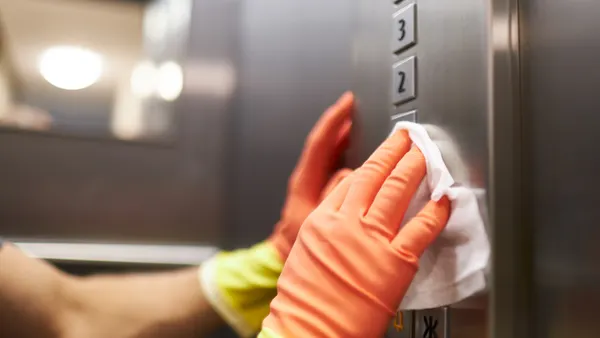Dive Brief:
- The U.S. Environmental Protection Agency has updated guidance on indoor air quality strategies to prevent the spread of common respiratory viruses in public indoor spaces such as schools, offices and commercial buildings.
- The guidance provides a multi-layered approach to prevent the spread of respiratory viruses. This approach includes filtration improvements such as HVAC system upgrades, air treatment technologies, administrative controls, and cleaning and disinfection practices, EPA said in a news release Friday.
- The guidance, alongside other preventive measures like immunizations and handwashing, can help curb the transmission of viruses indoors, where people spend roughly 90% of their time, Joseph Goffman, assistant administrator for EPA’s Office of Air and Radiation, said in a statement.
Dive Insight:
Inadequate ventilation can increase indoor pollutant levels by not bringing in enough outdoor air to dilute emissions from indoor sources and not carrying indoor air pollutants out of the area — a situation that can result in the spread of respiratory viruses that cause millions of illnesses and thousands of hospitalizations and deaths in the U.S., EPA said.
Last year, the Centers for Disease Control and Prevention updated its building ventilation guidance to include a recommendation of at least five air changes per hour in occupied spaces, while ASHRAE released Standard 241, Control of Infectious Aerosols — its first airborne infection risk mitigation standard for buildings. — in June. Standard 241 sets requirements for an infection risk management mode, specifications for outdoor airflow rates and filtration and performance testing, as well as assessment and planning guidelines that can help operators develop a building readiness plan.
The guidance from both organizations, spurred by the COVID-19 pandemic, highlights the need for an increased focus on indoor air quality among tenants and building operators, with research suggesting that improving IAQ can reduce exposure to respiratory pathogens and boost cognitive function performance, according to an article international IAQ experts published in Science magazine in March.
Operators should consult guidance by ASHRAE and other professional and government organizations for information on ventilation and air filtration to help reduce the spread of respiratory viruses indoors, according to EPA's guidance. While increasing ventilation and filtration is usually an effective strategy, the complexity of HVAC system components means that operators should interpret ASHRAE and other pertinent guidelines for their specific buildings and circumstances, EPA says.
For example, “increasing ventilation with all or mostly outdoor may not always be possible or practical,” like in the event of a wildfire or extreme weather events, EPA says. In such cases, using portable air cleaners or upgrading HVAC filters may help reduce the concentration of airborne virus particles indoors, the agency notes.
While individual IAQ strategies on their own may not be sufficient to prevent the spread of respiratory viruses indoors, implementing them in conjunction with other core preventive actions recommended by CDC can help, the agency said. These strategies include ensuring existing HVAC systems are providing at least the minimum outdoor air ventilation requirement in accordance with ventilation design codes; aiming for five or more air changes per hour of clean air; using portable high-efficiency particulate air, or HEPA, cleaners; and changing HVAC filters every three months or according to manufacturer’s instructions, CDC advises.
The effective rate of ventilation per person can also be increased by limiting the number of occupants present in the building in general, or in specific rooms, EPA said.
In addition to using portable air cleaners, operators can improve HVAC systems by running fans to circulate air indoors and operating exhaust, window and attic fans to further reduce the amount of particles in the air, per EPA’s guidance.
Two bills aimed at improving indoor air quality were proposed in the U.S. House of Representatives in July.
The Airborne Act, reintroduced by Rep. Don Beyer, D-Va., would provide commercial building owners with a $1/square-foot-tax-credit to conduct IAQ evaluations of their properties. The legislation would also create a voluntary certification program through the U.S. Department of Energy and EPA that would enable property owners to certify that their properties follow IAQ standards outlined in the bill.
The Indoor Air Quality and Healthy Schools Act of 2024, a bipartisan bill introduced by Rep. Brian Fitzpatrick, R-Pa., and Rep. Paul Tonko, D-N.Y,. seeks to expand EPA’s Indoor Environments Division and establish a list of significant indoor contaminants and voluntary guidelines to reduce the risk of exposure.
“Amid concerns about past and future pandemics, it is imperative that we work to improve the IAQ of our nation’s workplaces,” Beyer said in a July 11 statement.










